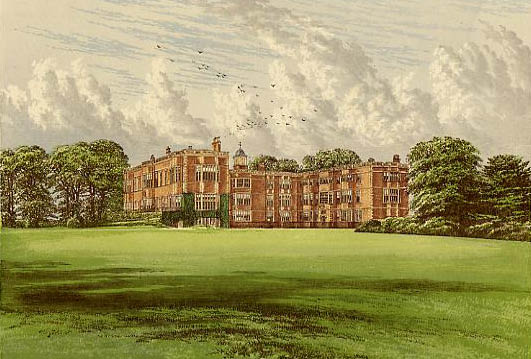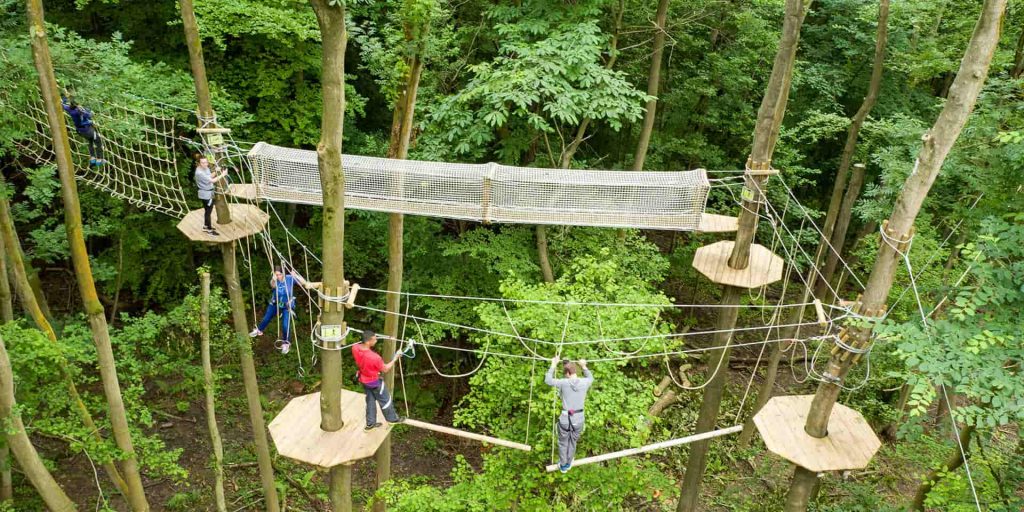Temple Newsam is over 1,000 acres of parkland, woodland, gardens, lakes, buildings and more, with a recorded history stretching back to the Domesday Book in the 11th Century. It’s been owned by the Templars, used as farmland, had a Tudor mansion built (and remodelled), been landscaped by England’s greatest gardener, inspired books, been turned into a coal mine, hosted sporting events, music festivals and weddings, and continues to be used by the people of Leeds to this day.
Explore our timeline to discover key events in the history of the estate.
Grime’s Dyke
The earliest evidence of habitation on what is now Temple Newsam dates from before 1000AD. Earthworks on the eastern edge of the estate are believed to be early defensive or boundary structures, and aerial photography shows the edges of what might be a Romano-British farm.
Domesday Book
The first concrete mention of Temple Newsam appears in the Domesday Book as “Neuhusam”.
Knights Templar
Temple Newsam is gifted to the Knights Templar, who build a preceptory on the site.
Sir Philip Darcy
Following the suppression of the Templars, by royal decree, the estate is passed to the ownership of Sir Philip Darcy.
The House
Between 1500 and 1520 a Tudor country house is built – the “Hampton Court of the North”.
Seized by the Crown
Temple Newsam is seized by the Crown following the execution of Thomas, Lord Darcy.
A gift from the King
King Henry VIII gifts Temple Newsam to his niece and her husband, the Earl and Countess of Lennox.
Bought by Sir Arthur Ingram
The estate is bought by Sir Arthur Ingram for £12,000.
Rebuilding of the House
Over the next 20 years Sir Arthur Ingram rebuilds most of the House, with some of the existing structure retained in the west wing.
England’s Greatest Gardener
Famed landscaper and gardener Capability Brown is employed to re-landscape the park, work which continues for a decade.
Inspiring Literature
Walter Scott publishes the book Ivanhoe, which features a Templar preceptory named Temple Stowe inspired by Temple Newsam.
The Compulsory Purchase
The Leeds Corporation compulsorily purchases a portion of the estate to build a sewage works.
Sold to the City
Edward Wood, Earl of Halifax sells part of the Temple Newsam estate to the City of Leeds for a nominal sum, with covenants guaranteeing its use for the people of the city in the future.
Coal mining continued on the site until the 1970s, when the remainder of the estate became owned by the City.
The last of the coal
The final open cast coal mine at Temple Newsam closes down, with re-landscaping completed a year later.
Music in the Park
From 1994 to 2014 Temple Newsam hosts the Party in the Park and Opera in the Park concerts, organised by Leeds City Council.
The Leeds Festival
A new northern leg of the Reading and Leeds Festival is held at Temple Newsam from 1999 until 2002, when it moved to Bramham Park.
The Friends of Temple Newsam Park
Friends of Temple Newsam Park are formed to preserve and improve the park for the years to come.
Go Ape
The Go Ape aerial adventure course opens, giving a new treetop view of the park.




